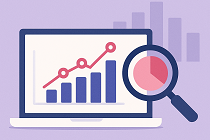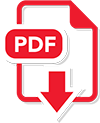
BUS 315: Applied Data Science - Discovering Consumer Insights from Everyday Data
Why do people choose one brand over another? How do trends shape what we wear, eat, or watch? Why do people buy second-hand clothes? This interactive, beginner-friendly course explores how data can help us answer real-world questions and understand some typical consumer behaviors. Each session is built around a fun and hands-on research question, helping you uncover how data can challenge assumptions, offer objective insights, and improve everyday decision-making. Students will work with different types of data, surveys, social media, open datasets, and learn how to explore associations, describe data in a visually catchy way, spot central tendencies, and tell compelling and engaging stories. We will disclose the power of simple data tools to make sense of the world. Whether interested in music trends, brand loyalty, sustainability, or social buzz, students will develop a practical, creative toolkit to “make it count”—transforming everyday questions into meaningful insights. Throughout the course, students will use Excel or similar software to organize, analyze, and visualize data.
Learning Outcomes and Assessment Measures
Below are the course’s learning outcomes, followed by the methods that will be used to assess students’ achievement for each learning outcome. By the end of this course, students will be able to:
- distinguish between primary and secondary data, identifying appropriate sources for different types of consumer behavior research questions;
- design simple questionnaires based on behavioral theories and practical guidelines for data collection, with a focus on understanding motivations, preferences, and decision-making processes;
- summarize and communicate findings using clear, visually appealing tables and graphs, selecting the most appropriate formats for different types of data;
- interpret patterns and associations in consumer data using simple descriptive measures (e.g., frequency distributions, mode, median, mean) and association tools, translating data into actionable insights;
- apply basic behavioral concepts (e.g., decision fatigue, social proof, habits, cognitive biases) to frame research questions and interpret patterns in consumer data.

